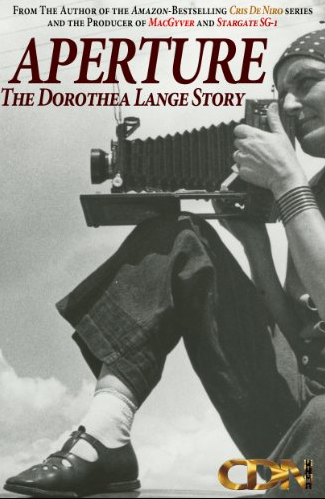THE STAGE 32 LOGLINES
Post your loglines. Get and give feedback.

APERTURE: THE DOROTHEA LANGE STORY
By Gerard de Marigny
Dorothea
Lange was not only the pioneer of photo documentary journalism, she was most
probably the best shooter to ever hold a camera.
Her gifted eye is unparalleled still today.
Her passion for telling stories through the lens of a camera is only matched by the passion she had for the subjects of her pictures.
At a time when words of the Great Depression’s horrific impact on hard-working citizens were falling on deaf ears, it was Dorothea's pictures that finally motivated the "powers that be" to provide the necessary relief to those deserving Americans, relief to which they were entitled. From the desperation of America’s homeless, migrant farmers and Native Americans, to the cruel treatment of Japanese Americans forced into internment camps during World War II, Dorothea brought national awareness to the exploitation of our nation’s most underprivileged citizens.
Dorothea Lange's thirty-year life’s mission to provoke society to correct injustices took her to over thirty states, at the expense of her own personal life, children, and health.
Every great film possesses great dramatic irony. No irony is greater than that of Lange's maternal shortcomings and her most-famous portrait of a mother holding her two children in a tent in the "Dust Bowl" during the Great Depression.
Dorothea Lange was the antithesis of that now world-famous motherly image, yet her eye captured a much bigger picture, one that resonated so powerfully it started a relief movement paving the way for mothers everywhere to provide for their children.
SYNOPSIS:
Seventy-year-old Dorothea Lange prepares for her MoMA exhibition with her assistant, and the curator of photography at the Museum of Modern Art (MoMA), John Szarkowsi (renown in his own right).
As Lange and Szarkowsi decide on a picture, they debate its importance. Though a proponent of Lange’s, Szarkowsi does not (yet) possess the profound vision of her works. Sometimes it is Dorothea that champions a shot (introducing a sequence) and sometimes its Szarkowsi that invokes a poignant memory that Dorothea then begins to share and expound upon. As each photo is decided upon, Dorothea’s assistant tacks it up on a large bulletin board in her living room.
Lange begins to tell that specific picture's story, as we push in and morph the image into live action.
At various motivated times, we will cut back to Lange, Szarkowsi, and Dorothea’s doting assistant, showing their emotional reactions growing (from laughter from her wit, to anger, to tears), adding to the power of each subsequent sequence.
Continuing to decide which pictures best tell her story for the MoMA exhibit, we will use the same transitional technique to morph the picture into our live action flashback narrative.
From the very start, and building throughout the old-Dorothea sequences, she expresses her anger at her own frail health; then progresses to her growing desperation, as she accepts the improbability of her surviving long enough to attend the MoMa opening of her works, despite her fervent desire to. The movie ends after the Szarkowsi “I see” payoff described below, with Dorothea allowing a tired-but-satisfied smile, as she stands in front of the bulletin board now filled with her most famous photos.
We fade to black … then …
SUPER:
Dorothea Lange died of esophageal cancer on October 11, 1965, in San Francisco, California, at the age of 70, just three months before the Dorothea Lange Exhibition opened at the Museum of Modern Art in New York City.
Since her death, her work has endured to influence generations of documentary photographers and filmmakers.
PAYOFFS:
- Our first “push-in” features Dorothea’s limp from polio and her feelings of shame from it. Then, in the flash-forwards to old-Dorothea, we provide the payoff of her seen still limping, now accepting of her disability, yet still plagued by it.
- In more than one flashback sequence, Dorothea asks people, “But do you see …?”
Then, in one of the final scenes with old-Dorothea, she asks Szarkowsi (who at the start was arrogant, non-emotional, and narrow-focused, but is now visibly moved), as the three of them gaze on the now completed board with her photos, “Do you see …?”
We pan the camera from one side of the board (dramatic music building) as Szarkowsi takes in the entirety, enormity, and depth of her photos.
He nods then replies in a throaty almost-whisper, “Yes Dorothea … I see.”
